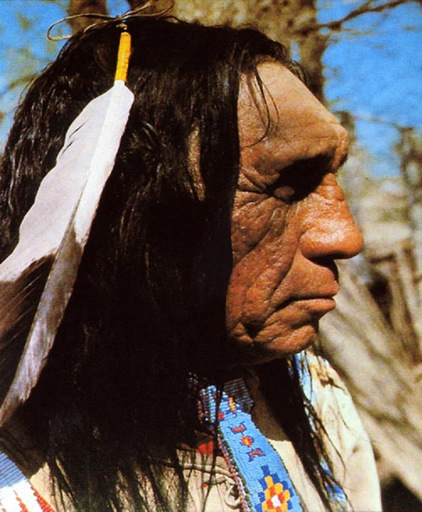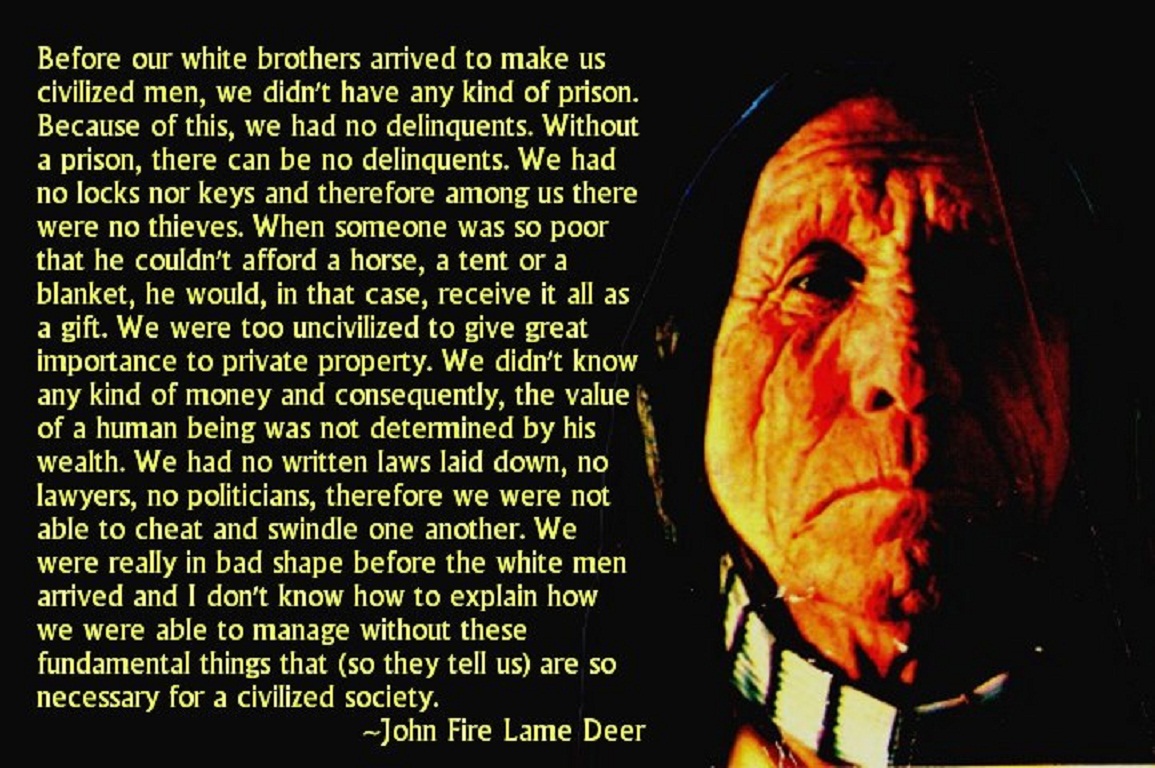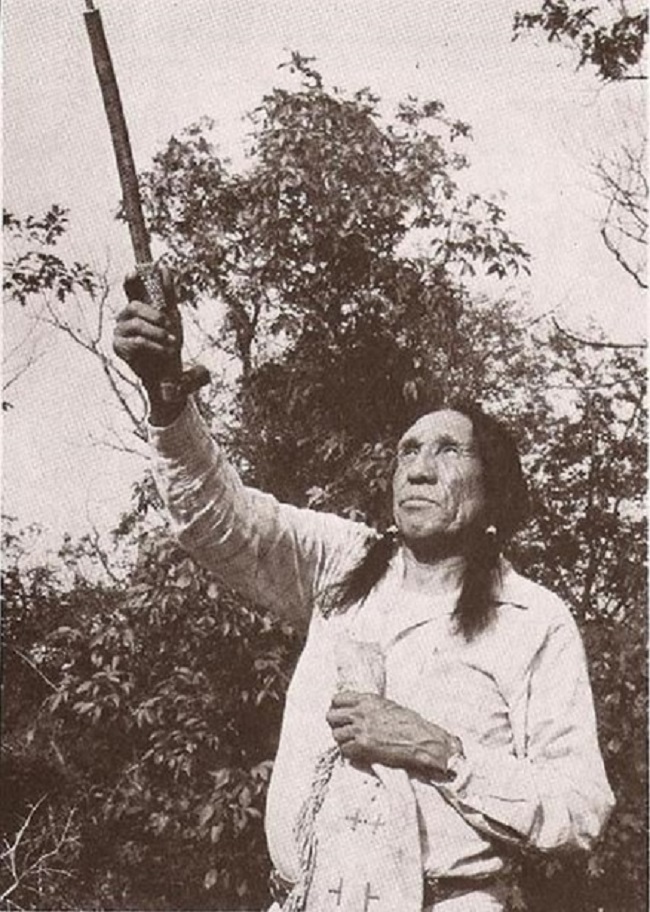John Fire Lame Deer (1903-1976) was a Native American spiritual leader, healer, and social activist belonging to the Lakota Sioux tribe. Born in 1903 on the Rosebud Reservation in South Dakota, Lame Deer grew up in a time when the United States government was aggressively trying to assimilate Native American tribes into mainstream American society. As a result, his life was marked by the struggle to preserve and revitalize Native American culture and spiritual practices.
Early Life:
John Fire Lame Deer, also known as Tahca Ushte or Lame Deer, was born into a traditional Lakota family. His father, Silas Fire Let-Them-Have-Enough, was a respected spiritual leader, and his mother, Sally White Feather, was a skilled healer. As a child, Lame Deer was immersed in Lakota traditions and spirituality. He was taught the ways of his people, including their language, spiritual ceremonies, and medicinal practices.
Facing Assimilation:
As a young man, Lame Deer experienced the difficulties of life on the reservation and the pressure to conform to mainstream American culture. He attended a boarding school operated by the Bureau of Indian Affairs, where Native American children were often punished for speaking their language or practicing their traditions. Despite these challenges, Lame Deer held on to his identity and beliefs, learning about the sacred pipe, the sweat lodge, and the vision quest from his father and other elders.
The Visionary:
In the 1930s, Lame Deer had a series of powerful visions that called him to become a medicine man, or wičháša wakȟáŋ. These visions provided guidance and insight into his people's struggles and helped shape his work as a spiritual leader. As a medicine man, Lame Deer participated in healing ceremonies, offered guidance to his community, and conducted traditional Lakota rituals, such as the Sun Dance and the Ghost Dance.
Social Activist:
John Fire Lame Deer was not only a spiritual leader but also a social activist. He was involved in the American Indian Movement (AIM), a civil rights organization founded in 1968 to address issues affecting Native Americans, such as treaty rights, cultural preservation, and socioeconomic challenges. Lame Deer was present at the 1973 occupation of Wounded Knee, which brought national attention to the struggles faced by Native Americans.
Author and Educator:
Lame Deer shared his knowledge and experiences through lectures, seminars, and writing. He co-authored the book "Lame Deer, Seeker of Visions" (1972) with Richard Erdoes, which has been widely read and regarded as a classic of Native American literature. In this work, Lame Deer shares his life story, discusses Lakota spirituality and culture, and reflects on the struggles and hopes of his people.
Legacy:
John Fire Lame Deer passed away in 1976, but his legacy continues to inspire future generations. As a spiritual leader, healer, and social activist, he dedicated his life to the preservation and revitalization of Native American culture, tradition, and spirituality. Today, his teachings continue to offer valuable insights into the history and experiences of Native American people, and his message of cultural pride and resistance remains relevant in the ongoing struggle for indigenous rights and recognition.
__________________________
"Even animals of the same kind – two deer, two owls – will behave differently from each other. I have studied many plants. The leaves of one plant, on the same stem – none is exactly alike. On all the earth there is not one leaf that is exactly like another. The Great Spirit, Wakan Tanka, likes it that way. He only sketches out the path of life roughly for all the creatures on earth, shows them where to go, where to arrive at, but leaves them to find their own way to get there. He wants them to act independently according to their own nature, to the urges in each of them. If Wakan Tanka likes the plants, the animals, even little mice and bugs, to do this, how much more will he abhor people being alike, doing the same things, getting up at the same time, putting on the same kind of store-bought clothes, riding the same subway, working in the same office at the same job with their eyes on the same clock and, worst of all, thinking alike all the time. All creatures exist for a purpose. Even an ant knows what that purpose is – not with its brain, but somehow it knows. Only human beings have come to a point where they no longer know why they exist. They don’t use their brains and have forgotten the secret knowledge of their bodies, their senses, or their dreams. They don’t use the knowledge the spirit has put into every one of them; they are not even aware of this, and so they stumble along blindly on the road to nowhere – a paved highway which they themselves bulldoze and make smooth so they can get faster to the big, empty hole which they’ll find at the end, waiting to swallow them up. It’s a quick, comfortable superhighway, but I know where it leads to. I have seen it. I’ve been there in my vision, and it makes me shudder to think about it."
_____
John Fire Lame Deer, (in Lakota Tȟáȟča Hušté; 1900 or 1903–1976, sources differ), also known as Lame Deer, John Fire, John (Fire) Lame Deer and later The Old Man, was a Lakota holy man, member of the Heyoka society, grandson of the Miniconjou head man Lame Deer, father of Archie Fire Lame Deer.
John Fire Lame Deer was a Mineconju-Lakota Sioux born on the Rosebud Indian Reservation. His father was Silas Fire Let-Them-Have-Enough. His mother was Sally Red Blanket. He lived and learned with his grandparents until he was 6 or 7, after which he was placed in a day school near the family until age fourteen. He was then sent to a boarding school, one of many run by the U.S. Bureau of Indian Affairs for Indian youth. These schools were designed to “civilize” the Native Americans after their forced settling on reservations.
Lame Deer's life as a young man was rough and wild; he traveled and rode the rodeo circuit as a rider and later as a rodeo clown. According to his personal account, he drank, gambled, womanized, and once went on a several day long car theft and drinking binge. Eventually, he happened upon the house where the original peace pipe given to the Lakota by White Buffalo Calf Woman was kept; much to his surprise, the keeper of the pipe told Lame Deer she had been waiting for him for some time. This served as a turning point in Lame Deer's life. He settled down and began his life as a wichasha wakan (“medicine man”, or more accurately, “holy man”).

Making his home at the Pine Ridge Reservation and traveling around the country, Lame Deer became known both among the Lakota and to the American public at a time when indigenous culture and spirituality were going through a period of rebirth and the psychedelic movement of the 1960s had yet to disintegrate. He often participated in American Indian Movement events, including sit-ins at the Black Hills, land legally belonging to the Lakota that had been taken back by the United States government after the discovery of gold. The Black Hills are considered to be the axis mundi or center of the world to the Lakota Indians.
http://en.wikipedia.org/wiki/John_Lame_Deer
“Before our white brothers arrived to make us civilized men, we didn’t have any kind of prison. Because of this, we had no delinquents. Without a prison, there can be no delinquents. We had no locks nor keys and therefore among us there were no thieves. When someone was so poor that he couldn’t afford a horse, a tent or a blanket, he would, in that case, receive it all as a gift. We were too uncivilized to give great importance to private property. We didn’t know any kind of money and consequently, the value of a human being was not determined by his wealth. We had no written laws laid down, no lawyers, no politicians, therefore we were not able to cheat and swindle one another. We were really in bad shape before the white men arrived and I don’t know how to explain how we were able to manage without these fundamental things that (so they tell us) are so necessary for a civilized society.”
- John (Fire) Lame Deer, Sioux Lakota, 1903-1976.”

Born Tȟáȟča Hušté
1900 or 1903
Rosebud Indian Reservation
Died 1976
